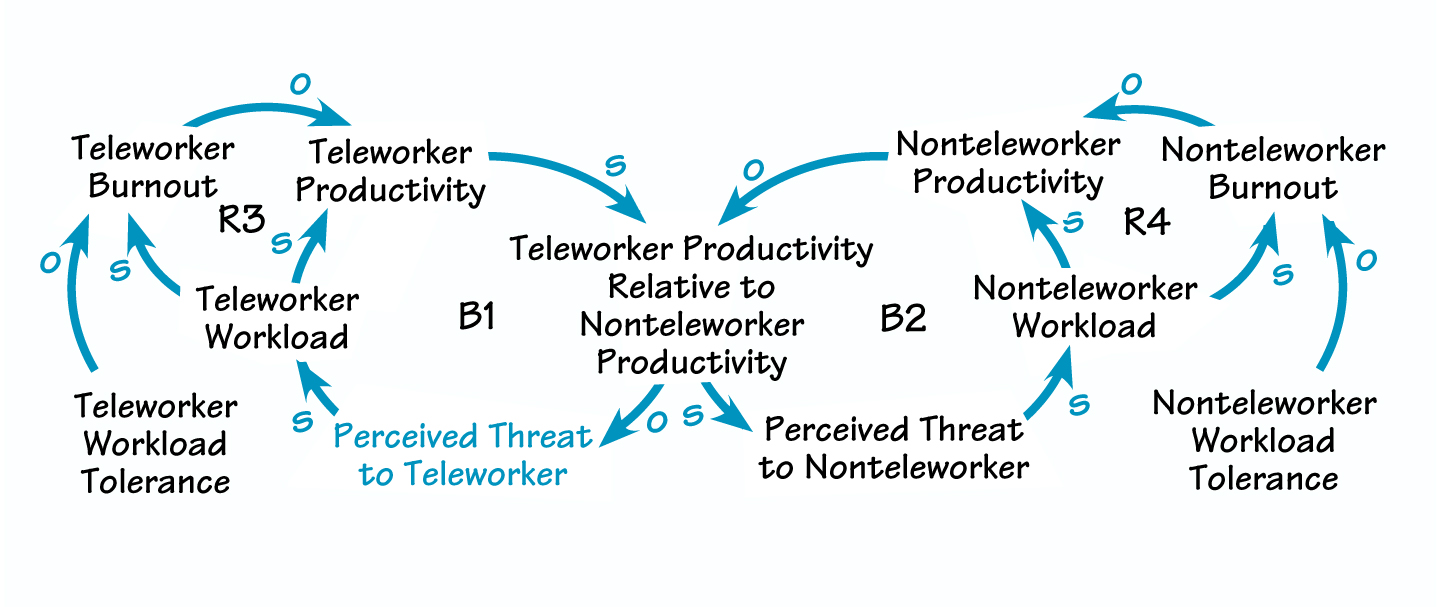In the March issue of The Systems Thinker, we explored the growing phenomenon of telecommuting—including both the benefits and potential dark side of this new trend in working life.
Fabian Szulanski, a system dynamics Master’s candidate at the University of Bergen and the director of the consulting firm LoopNet, submitted an intriguing interpretation of the dynamics in the telecommuting story (see “Escalating Workloads”). Fabian detects a systems archetype— “Escalation”—that could come to pass in a telecommuting situation. (Systems archetypes are classical “stories” or issues that occur in a broad range of situations; for more information about them, see “Systems Archetypes at a Glance,” The Systems Thinker, Vol. 3 Number 4.)
In an “Escalation” situation, one party takes actions that are perceived by the other as a threat. The other party responds in a similar manner, increasing the threat to the original party and provoking even more threatening actions. The resulting escalation of actions creates a reinforcing process that can be traced in a figure 8 pattern around the two balancing loops that make up this structure.
Clearly, this rising frenzy of increasing workloads could not go on indefinitely. . . .As workload relentlessly increases, burnout sets in, reducing workers’ productivity.
In the “Escalation” part of Fabian’s diagram (B1 and B2), the structure sets up a spiral of competition between teleworkers and non-teleworkers. Specifically, teleworkers, worrying that their supervisors and/or colleagues might see them as less committed to their jobs, start taking on larger workloads (B1). Their actual productivity rises, and their productivity relative to their non-teleworking colleagues increases. This imbalance is threatening to non-teleworkers (B2), who also then step up their workloads. Their productivity in turn rises, reducing their teleworking colleagues’ productivity relative to their own. Once again, teleworkers feel threatened and therefore take on even more work.
Clearly, this rising frenzy of increasing workloads could not go on indefinitely. Loops R3 and R4 show what happens when the workers involved hit the limit of their tolerance for taking on more and more work. As workload relentlessly increases, burnout sets in, reducing workers’ productivity.
Fabian suggests, “A superficial analysis of this possible scenario could lead us to say that burnout alleviates the escalation process—which is true; but is it healthy?” What would be a more sustainable solution? Fabian’s ideas include reassuring teleworkers that they are still eligible for promotions even though they work from home, and reminding them that they don’t have to prove themselves any more than do their office-based colleagues. Equally important, organizations could help office-based workers understand the reasons behind teleworkers’ occasional compulsion to prove themselves, thus taking the perceived threat out of the equation. Finally, the company could intentionally avoid rewarding either party for taking on unreasonable workloads— thus cutting the link between their behavior and the perception of threat that typically drives the “Escalation” dynamic. In short, as Fabian points out, “enabling trust, collaboration, equality, and a sense of belonging” constitutes a much more robust policy than allowing escalating competition to consume workers.
Escalating Workloads

